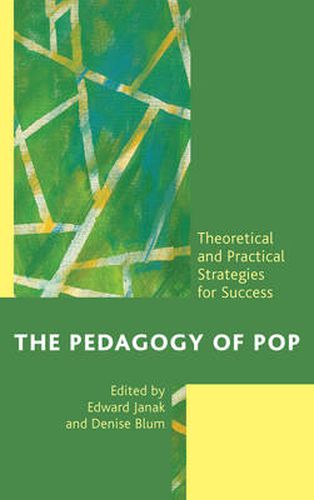Readings Newsletter
Become a Readings Member to make your shopping experience even easier.
Sign in or sign up for free!
You’re not far away from qualifying for FREE standard shipping within Australia
You’ve qualified for FREE standard shipping within Australia
The cart is loading…






This title is printed to order. This book may have been self-published. If so, we cannot guarantee the quality of the content. In the main most books will have gone through the editing process however some may not. We therefore suggest that you be aware of this before ordering this book. If in doubt check either the author or publisher’s details as we are unable to accept any returns unless they are faulty. Please contact us if you have any questions.
Media competes with public schools in terms of student engagement and time. However, the two needn’t be mutually exclusive. The Pedagogy of Pop: Theoretical and Practical Strategies for Success discusses a variety of strategies and approaches for using social and mass media as tools through which teachers might improve schooling.
While there is a vast body of literature in this field, editors Edward A. Janak and Denise Blum have created a text which differs in two substantive ways: scope and sequence. In terms of scope, this work is unique in two facets: first, it presents both theory and practice in one volume, bridging the two worlds; and second, it includes lessons from secondary and postsecondary classrooms, allowing teachers on all levels to learn from each other. In terms of sequence, The Pedagogy of Pop draws on lessons from both historical and contemporary practice.
The introductory section of Janak and Blum’s collection presents a pair of papers that use somewhat different approaches to examine the historical roots of contemporary critique. Part I presents a series of chapters designed to provide guidelines and theories through which educators on all levels can think about their practice, focusing more on the why of their approach than the how. Part II presents a more hands-on approach by sharing a variety of specific strategies for incorporating pop culture in all its forms (technology, music, television, video games, etc.) in both secondary and postsecondary classrooms. The conclusion shows the praxis of teaching with popular culture, presenting a counterpoint to current thinking as well as a case study of the best of what can happen when popular culture is applied effectively.
$9.00 standard shipping within Australia
FREE standard shipping within Australia for orders over $100.00
Express & International shipping calculated at checkout
This title is printed to order. This book may have been self-published. If so, we cannot guarantee the quality of the content. In the main most books will have gone through the editing process however some may not. We therefore suggest that you be aware of this before ordering this book. If in doubt check either the author or publisher’s details as we are unable to accept any returns unless they are faulty. Please contact us if you have any questions.
Media competes with public schools in terms of student engagement and time. However, the two needn’t be mutually exclusive. The Pedagogy of Pop: Theoretical and Practical Strategies for Success discusses a variety of strategies and approaches for using social and mass media as tools through which teachers might improve schooling.
While there is a vast body of literature in this field, editors Edward A. Janak and Denise Blum have created a text which differs in two substantive ways: scope and sequence. In terms of scope, this work is unique in two facets: first, it presents both theory and practice in one volume, bridging the two worlds; and second, it includes lessons from secondary and postsecondary classrooms, allowing teachers on all levels to learn from each other. In terms of sequence, The Pedagogy of Pop draws on lessons from both historical and contemporary practice.
The introductory section of Janak and Blum’s collection presents a pair of papers that use somewhat different approaches to examine the historical roots of contemporary critique. Part I presents a series of chapters designed to provide guidelines and theories through which educators on all levels can think about their practice, focusing more on the why of their approach than the how. Part II presents a more hands-on approach by sharing a variety of specific strategies for incorporating pop culture in all its forms (technology, music, television, video games, etc.) in both secondary and postsecondary classrooms. The conclusion shows the praxis of teaching with popular culture, presenting a counterpoint to current thinking as well as a case study of the best of what can happen when popular culture is applied effectively.